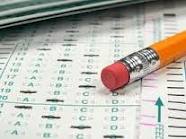
In recent years, national and state leaders, backed by the public, have taken the view that public schools frequently fail to give students a good education, which in turn, has caused a myriad of bad outcomes (Madaus, Raczek, & Clarke, 1997). Elmore, Abelmann, & Fuhrman (1996) reports this perceived problem has resulted in policies to hold educators accountable for imparting higher academic standards, as measured by high-stakes, standardized tests. The No Child Left Behind Act was passed in 2001, and was intended to require each state to have some form of “standards” on which all students would be tested, and teachers could be held accountable for the learning taking place inside their classrooms. Some researchers such as Levin (1998) and Tatto (2006) suggest this intricate system of testing and accountability was implemented partly because nations seek to be competitive in an increasingly global marketplace, and “accountability” has been a frequent part of education reform worldwide. Darling-Hammond & Wise (1985) suggests that all educational policies have the potential to induce both societal costs and benefits, and research has repeatedly shown that educational policies may have unintended effects. Marshall (1998) terms this unintended effect as the “slippage between policy intent and outcomes” (p.103). Even with the inclusion of possible unintended negative outcomes taking place, national and state leaders, and the main stream media, continue to support this high stakes testing environment in America. Komhaber & Orfield (2001) have explored the major reasons that they see as particularly influential in dictating public policy on testing: (1) testing enhances economic productivity; (2) testing motivates students; and (3) testing improves teaching and learning. Conversely, Komhaber & Orfield (2001) have also dispelled all three of those assumptions: (1) they point out that the U.S. economy has done better than other European economies, even though test scores of U.S. students have been lower; (2) they commented that “common wisdom, as well as behavioral psychology, holds that normal thinking beings strive to gain rewards and avoid painful consequences” (p.7); and (3) the theory that testing improves teaching and learning is fallacious, as neither teaching nor learning are areas that necessarily operate in a rational and constructive way (p.9). With strong arguments on both sides of the standardized testing debate, the effect on teachers, programs, and students are often overlooked. Linn (2000) argues that unintended negative effects often overshadow positive ones when accountability systems have high-stakes testing and calls for evaluation of such negative outcomes.
Teacher accountability is a large part of the No Child Left Behind Act of 2001, but does holding teachers accountable through high stakes standardized testing have an effect on their instructional performance? Berryhill, Linney, & Fromewick (2009) conducted a research study using 100 U.S. elementary school teachers and investigated their perceptions of their state’s accountability policy, particularly its effect on their job engagement. They set out to discover whether elementary school teachers perceived accountability policies as having unintended consequences for their well being, and they found that teachers reported a myriad of negative policy consequences from adding stress, to teachers feeling emotionally exhausted (Berryhill, Linney, & Fromewick, 2009). This research finding was consistent with other investigations such as Abrams, Pedulla, & Madaus (2003); Barksdale-Ladd & Thomas (2000); and Webb (2006).
As a result of teachers having an increased amount of pressure to perform and produce high test scores, some school districts offer county wide professional development programs to attempt to enhance the instructional quality of “under-performing” teachers. With the implementation of these professional development classes, the question arises: do they help drive instruction in a way that is measurable in student learning, and more importantly to the topic of standardized testing: does this training translate into higher student standardized test scores? Garet, et. al. (2008) conducted a study to examine the effect of the Language Essentials for Teachers of Reading and Spelling (LETRS) professional development curriculum on the reading achievement scores of more than 5,000 second graders from ninety elementary schools in four states during the 2005-2006 school year. The study schools were randomly assigned to one of three groups: one of which teachers received training following the LETRS curriculum, another where the teachers received the LETRS training as well as ongoing instructional coaching and support and third where the teachers received the standard professional development available in their district. Garet, et. al. (2008) found that providing second grade teachers reading instruction training using the LETRS curriculum (with or without the instructional coaches) did not increase the reading test scores of their students. Although there are various reading and spelling curriculum programs for teachers to adopt, this research suggests that even with a professional development plan in place to “help” teachers strengthen their instruction, it is not going to automatically correlate with higher test scores. Therefore, where does this leave teachers who want to effectively instruct their students, and show their learning gains through state standardized testing?
With numerous schools and teachers being impacted by high stakes standardized testing, where does this leave the student? Many teachers are now looking beyond the classroom for answers as to how they can raise student standardized test scores. O’ Dwyer, Russell, Bebell, & Seeley (2008) examined the relationship between fourth grade mathematics achievement and technology use at home and at school. The study used item level achievement data, individual student’s state test scores on the Massachusetts Comprehensive Assessment System (MCAS), and student and teacher responses to detailed technology-use surveys. The sample came from 986 general education students from 55 intact fourth grade classrooms in 25 schools across nine school districts in Massachusetts. . O’ Dwyer, Russell, Bebell, & Seeley (2008) found that various uses of technology are differentially related to student outcomes and that in general, student and teacher technology uses are weakly related to mathematics achievement on the MCAS. Therefore, where does this leave the student in terms of taking accountability for themselves and extending learning outside the classroom while attempting to raise their own standardized testing scores?
In conclusion, the debate over of high stakes standardized testing is evident in all aspects of education as schools are continuously being graded, teachers are being evaluated, and students are being tested. Both sides of the debate have valid arguments, but having validation of arguments regardless of the position, is obviously not improving student learning, or raising standardized test scores. Some researchers such as Viruru (2006) suggest that:
“standardized testing for young children is colonizing: (1) the way in which testing has been constructed represents corporate rather than child centered agendas; (2) the ideology of diversity represented in many public policies, particularly standardized testing, instituted in the United States is gravely limited; and (3) by mandating that children take tests but by not regulating the content that is part of those tests, racist and colonialist ideas are being presented to children in legitimate forms” (p.51).
Despite the growing body of knowledge surrounding the negative impacts of high stakes standardized testing, it appears that state and national policy makers continue to set the bar high with the implementation of these tests without regards to possible negative consequences on schools, teachers, programs and students. This research raises questions about the validity and reliability of the standardized testing process and how students, teachers, and schools are held accountable.
References
Abrams, L. M., Pedulla, J. J., & Madaus, G. F. (2003). Views from the classroom: Teachers’ opinions of statewide testing programs. Theory Into Practice, 42, 18–29.
Barksdale-Ladd, M. A., & Thomas, K. F. (2000). What’s at stake in high-stakes testing: Teachers and parents speak out. Journal of Teacher Education, 51, 384–397.
Berryhill, J., Linney, J.A., Fromewick, J. (2009). The effects of education accountability on teachers: are policies too stress provoking for their own good? International Journal of Education Policy & Leadership, (4)5.
Cannella, G.S., & Viruru, R. (2004). Childhood and post colonization: Power, education and contemporary practice. New York: Routledge.
Darling-Hammond, L., & Wise, A. E. (1985). Beyond standardization: State standards and school improvement. Elementary School Journal, 85, 315–336.
Elmore, R. F., Abelmann, C. H., & Fuhrman, S. H. (1996). The new accountability in state education reform: From process to performance. In H. F. Ladd (Ed.), Holding schools accountable: Performance-based reform in education. Washington, DC: Brooking Institution.
Garet, M.S., Cronen, S., Eaton, M., Kurki, A., Ludwig, M., Jones, W., Uekawa, K., Falk, A., Bloom, H., Doolittle, F., Zhu, P., Sztejnberg, L. (2008). The Impact of Two Professional Development Interventions on Early Reading Instruction and Achievement (NCEE 2008- 4030). Washington, DC: National Center for Education Evaluation and Regional Assistance, Institute of Education Sciences, U.S. Department of Education.
Kohn, A. (1999). The schools our children deserve: Moving beyond traditional classrooms and tougher standards. Boston, MA: Houghton Mifflin.
Kohn, A. (2000). The case against standardized testing: Raising the scores, ruining the schools. Portsmouth, NH: Heinemann.
Kornhaber, M. L., & Orfield, G. (2001). High stakes testing policies: Examining their assumptions and consequences. In G. Orfield & M. L. Kornhaber (Eds.), Raising standards or raising barriers: Inequality and high stakes testing in public education (pp. 1-18). New York: Century Foundation Press.
Levin, B. (1998). An epidemic of education policy: (What) can we learn from each other? Comparative Education, 34, 131–141.
Linn, R. L. (2000). Assessments and accountability. Educational Researcher, 29(2), 4–16.
Madaus, G. F., Raczek, A. E., & Clarke, M. M. (1997). The historical and policy foundations of the assessment movement. In A. L. Goodwin (Ed.), Assessment for equity and inclusion: Embracing all our children. New York: Routledge.
Marshall, C. (1998). Bridging the chasm between policy makers and educators. Theory Into Practice, 27(2), 98–105.
Martin, R. (2004). America as risk/securitizing the other. Interventions, International Journal of Postcolonial Studies, 6(3), 351-361.
O’ Dwyer, L.M., Russell, M., Bebell, D., Seeley, K. (2008). Examining the Relationship between students’ mathematics test scores and computer use at home and at school. The Journal of Technology, Learning, and Assessment, (6)5.
Tatto, M. T. (2006). Education reform and the global regulation of teachers’ education, development and work: A cross-cultural analysis. International Journal of Education Research, 45, 231–241.
Viruru, R. (2006). Postcolonial technologies of power: standardized testing and representing diverse young children. International Journal of educational Policy, Research, & Practice: Reconceptualizing Childhood Studies, 7, 49-70.
Webb, P. T. (2006). The choreography of accountability. Journal of Educational Policy, 21, 201–214.


 RSS Feed
RSS Feed